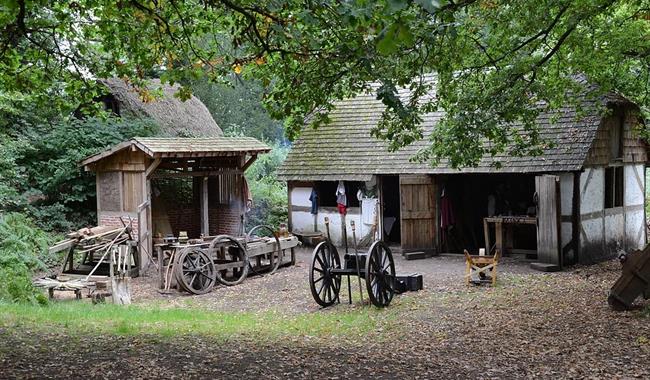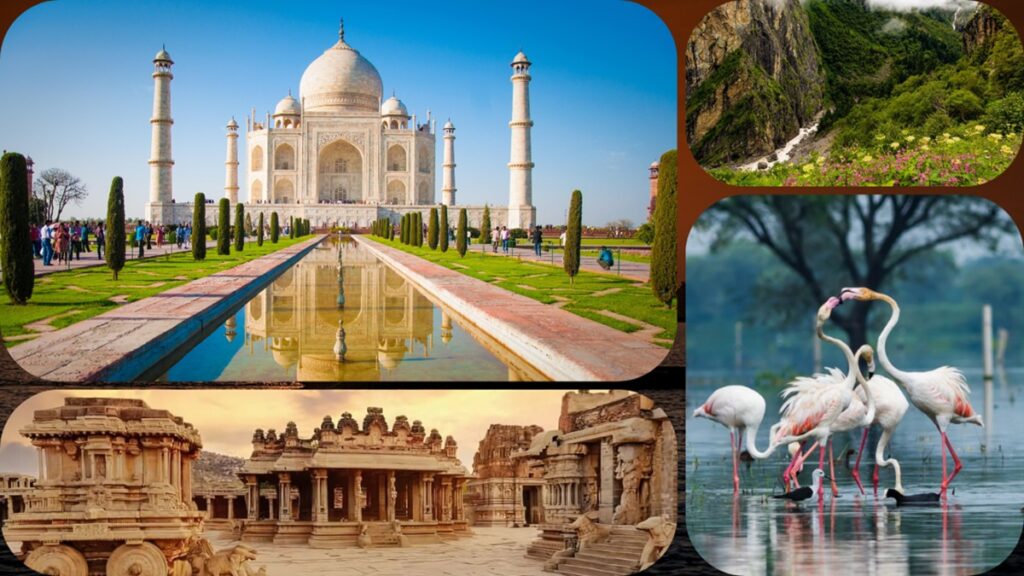Whispers of the Past: Traveling Through Time & History
Introduction
In an age dominated by high-speed internet and lightning-fast travel, the past may seem like a distant, fading whisper. Yet, when we step into a historic city, a weathered ruin, or a centuries-old alleyway, time itself feels suspended. History isn’t confined to books or museums—it breathes through crumbling stone walls, echoes through cathedral arches, and lingers in ancient marketplaces. Traveling through time isn’t a fantasy; it’s a journey anyone can take by choosing destinations where history remains alive. This article explores the immersive experience of historical travel, guiding you through some of the world’s most evocative places that whisper secrets of bygone eras.
The Timeless Allure of Historical Travel
There’s something inherently magical about stepping into a place where centuries of stories converge. While beaches and resorts offer relaxation, historical destinations provide depth—each monument, palace, or cobblestone street offering a glimpse into the lives of those who came before.
Historical travel transforms you from a mere tourist into a time traveler. You walk where emperors ruled, where revolutions were ignited, and where poets found their muse. It’s an invitation to feel the pulse of human civilization through culture, architecture, and stories that shaped the modern world.

Europe’s Living History
Rome, Italy – The Eternal City
In Rome, history is not a relic; it is the very heartbeat of the city. The Colosseum, once echoing with the roar of gladiator games, stands tall as a monument to Roman might. The Roman Forum still whispers the political intrigues of senators and emperors. Even a simple walk through the cobbled streets reveals layers upon layers of history—from ancient temples to Renaissance fountains.
Rome is a city that demands you slow down. It invites you to sit beside ancient ruins, imagine the chariots racing in Circus Maximus, or marvel at Michelangelo’s masterpieces in the Vatican. Every turn tells a new story, and every ruin holds a secret waiting to be unearthed.
Athens, Greece – Cradle of Democracy
In Athens, the air is thick with mythology and philosophy. The Acropolis, crowned by the Parthenon, looms above the city like a guardian of ancient wisdom. Walk through the Agora where Socrates once questioned the nature of truth, and you can almost hear his voice carried by the wind.
Athens isn’t just about ruins; it’s about the roots of Western civilization. It tells the tale of democracy’s birth, of gods and mortals intertwining, and of thinkers who changed the course of human thought forever.

The Middle Eastern Tapestry
Cairo, Egypt – Echoes of the Pharaohs
In Cairo, history goes beyond centuries—it spans millennia. The Great Pyramids of Giza are the last remaining wonder of the ancient world, their massive presence a testament to the ingenuity of ancient Egyptians. Each stone seems to vibrate with the voices of workers, pharaohs, and priests.
The Egyptian Museum is a treasure trove of relics: golden masks, mummies, and papyrus scrolls that bring ancient rituals to life. The nearby mosques and bazaars add Islamic and Ottoman layers to the city, creating a unique fusion of epochs.
Petra, Jordan – A City Carved in Stone
Hidden within the desert, Petra is a rose-colored city carved into the cliffs by the Nabataeans over 2,000 years ago. The moment you pass through the narrow Siq and catch your first glimpse of the Treasury is unforgettable. It’s not just a structure; it’s a moment suspended in time.
Petra invites travelers to explore tombs, temples, and amphitheaters, all preserved by the desert’s embrace. As you climb to the Monastery or gaze from the High Place of Sacrifice, you feel a profound connection to the resilience and artistry of ancient civilizations.

Asia’s Enduring Legacy
Kyoto, Japan – Tranquility of Tradition
Kyoto is the spiritual heart of Japan, where centuries-old temples, shrines, and gardens offer a serene window into the past. Once the imperial capital, Kyoto is home to over 1,600 Buddhist temples and 400 Shinto shrines.
The city comes alive during cherry blossom season, when history and nature converge in poetic harmony. Walking through the bamboo groves of Arashiyama or participating in a traditional tea ceremony feels like entering a meditative dream.
What makes Kyoto unique is its subtle blend of history and modernity. Ancient rituals persist amid city life, showing that tradition doesn’t have to be forgotten—it can evolve gracefully.
Angkor, Cambodia – Lost City of the Khmer
Deep in the Cambodian jungle lies Angkor, the majestic remnant of the Khmer Empire. Angkor Wat, the crown jewel, is the largest religious monument in the world and an architectural marvel of Hindu-Buddhist synthesis.
At sunrise, as the temple’s silhouette emerges from the mist, you’re transported to another age. Exploring Angkor Thom, Bayon Temple with its stone faces, or Ta Prohm, overtaken by jungle roots, is like walking through a dream half-remembered. It’s a place where history merges with myth and nature.

The Americas’ Ancient Footprints
Cusco and Machu Picchu, Peru – Legacy of the Incas
Once the capital of the Inca Empire, Cusco is a blend of Incan and Spanish colonial architecture. Its narrow alleys and vibrant markets still bear the spirit of Andean culture. But the true jewel lies high in the Andes—Machu Picchu.
Often called the “Lost City of the Incas,” Machu Picchu is a mysterious citadel that defies logic. Its precise stonework, terraces, and astronomical alignments reveal a civilization far ahead of its time. The journey to reach it—by train, foot, or through the Inca Trail—is just as transformative as the site itself.
Teotihuacan, Mexico – Avenue of the Dead
Located near modern-day Mexico City, Teotihuacan is an ancient metropolis built over 2,000 years ago. The towering Pyramid of the Sun and the Pyramid of the Moon are monumental achievements that reflect deep cosmological understanding.
Walking the Avenue of the Dead, surrounded by grand structures, one can imagine the bustling life of this mysterious civilization. Though its original builders remain unknown, the legacy of Teotihuacan continues to inspire awe.

Africa’s Forgotten Kingdoms
Timbuktu, Mali – City of Gold and Learning
Once a center of trade and scholarship, Timbuktu was home to one of the world’s earliest universities. Its ancient manuscripts and mud-brick architecture reflect a time when this desert city was a beacon of knowledge.
Though remote and challenging to reach, Timbuktu offers insight into Africa’s intellectual and cultural history—often overshadowed by other narratives.
Lalibela, Ethiopia – Churches Carved from Earth
In the highlands of Ethiopia lies Lalibela, a sacred site where 11 medieval churches were hewn from solid rock. These UNESCO-listed structures are still in use, creating a living link between past and present faith.
Descending into these monolithic churches feels like entering a sacred time capsule. The craftsmanship, devotion, and spiritual atmosphere are beyond anything a photograph can convey.

Lessons from the Past
Traveling through time teaches more than facts—it instills perspective. Standing in the ruins of a once-great empire or among the tombs of forgotten kings reminds us of life’s impermanence and the resilience of the human spirit. History shows us both glory and tragedy, progress and decay.
It also teaches humility. We are not the pinnacle of civilization but part of a long continuum of cultures, ideas, and dreams. Visiting historical places is a quiet, powerful reminder that others walked before us—and that our stories, too, will someday be history.
Preserving the Past for Future Journeys
With growing tourism, preserving historical sites has become more urgent than ever. Overcrowding, pollution, and neglect threaten many sacred and significant locations. Travelers have a role to play—not only in enjoying history but in protecting it.
Responsible tourism involves respecting local cultures, supporting preservation efforts, and treading lightly in fragile sites. The goal is not just to witness the past, but to ensure that future generations can do the same.

Summary
“Whispers of the Past” isn’t just a poetic phrase—it’s a reality that awaits every traveler who dares to look beyond the present. From the grandeur of Roman arenas to the mysticism of Asian temples, the world is filled with living remnants of human history.
These journeys through time are not only about where we’ve been but about who we are and where we’re going. They deepen our understanding, stir our imagination, and enrich our lives in ways no modern convenience can.





